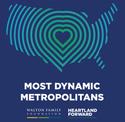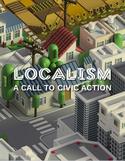Today, the Walton Family Foundation released “The Most Dynamic Metropolitans,” new research ranking the economic performance of metropolitan areas in the Heartland and across the country. The study demonstrates that a knowledge-based economy spurs economic growth in metropolises across the United States. Metro areas with knowledge-based economies ranked higher than cities that have yet to make much-needed investments in technology, education, entrepreneurship and commercialization. read more »
Urban Issues
New Metropolitan Rankings Show Knowledge-Based Industries and Entrepreneurship Drive Success
- Login to post comments
Obstacle Course
I was in Atlanta last month and was encouraged to poke around by the people who invited me. For my entire life the greater Atlanta metroplex has grown in population, geographic size, economic importance, and cultural relevance. As the locals like to remind everyone, Hartsfield-Jackson is the busiest airport in North America. Half the people I went to school with in New Jersey in the 70s and 80s migrated to places like Atlanta for all the usual reasons. read more »
- Login to post comments
Closing the Gap
China is building a magnetically levitated (maglev) train that will “fill the gap between high-speed rail and air transportation,” says CNN. This new train may have a top speed of 370 miles per hour, which “could narrow the gap between high-speed rail and air travel,” says Republic World. read more »
- Login to post comments
From Madera and Joplin to New York: Dispersed, Not Dense Urban Areas Dominate GDP
For some time, the mainstream press and conventional urban planners have been obsessed with a “dense urban” narrative. This is largely a myth, as has been demonstrated by resurgent growth in suburbs and exurbs. read more »
- Login to post comments
Localism: A Call to Civic Action
If you ask an American to tell you about their country, they’ll probably paint a bleak picture. Civic bonds are fraying. Division and tribalism dominate the news. The public is losing faith in democracy as the most effective way to govern. At a time of rapid demographic and cultural change, with frustration over economic inequality reaching a boiling point, our national politics has not found a way to generate consensus. read more »
- Login to post comments
How Vital Is Transit to Your Region?
Transit ridership is plummeting almost everywhere, yet officials in many cities are still devising hugely expensive plans for transit projects. One such city is Austin, whose leaders are talking about spending between $6 billion and $10.5 billion on new transit lines (and the final cost always ends up being more than the projections). read more »
- Login to post comments
Peer-to-Peer Carsharing: A Peek Under the Hood
While the media tends to studiously report – and often sensationalize – the latest developments involving Airbnb, e-scooters, and ride-hailing (especially Lyft and Uber), another booming “sharing economy” sector has recently been gaining attention. Peer-to-peer carsharing enables individuals to make their privately-owned vehicles available to others for short periods of time at a fee of the owner’s choosing. read more »
- Login to post comments
Faltering Growth in Largest US Municipalities, Concentrated in Densest
The 2018 municipality population estimates indicate a general decline in the annual growth rate over the past year compared to that of the last eight years. Among the 37 municipalities (including Honolulu, see Note 1) with at least 500,000 residents, the population grew 0.39 percent, down by more than one-half from the annual rate since the 2010 US Census (0.88 percent). Critically, this measures not metropolitan populations but those of cities (municipalities) within metropolitan areas. read more »
Bremerton, Washington: Challenges of an Industrial Town
Recent statistics from Indeed.com show that Washington, DC, the winner of the HQ2 contest, ranks second only to San Jose in the percentage of high-tech job listings. This tells us that most of the 238 cities that submitted bids --- despite assurance from Amazon --- were never seriously in the running. If mid-sized places like Indianapolis did not really stand a chance, however, what does that tell us about the economic prospects for smaller, more industrial places that have virtually no software companies? read more »
- Login to post comments
Interior Growth Increasing, Coastal Growth Tanking in California
A major shift took place in California’s population growth --- which has fallen below the national average --- over the past eight years. The latest Census Bureau population estimates (for July 1, 2018) show that growth has stalled in the coastal metropolitan areas. At the same time annual population growth rates have trended upward in the nearby interior areas. This article reports on these trends, dividing the state into three regions for analysis. read more »
- Login to post comments




















